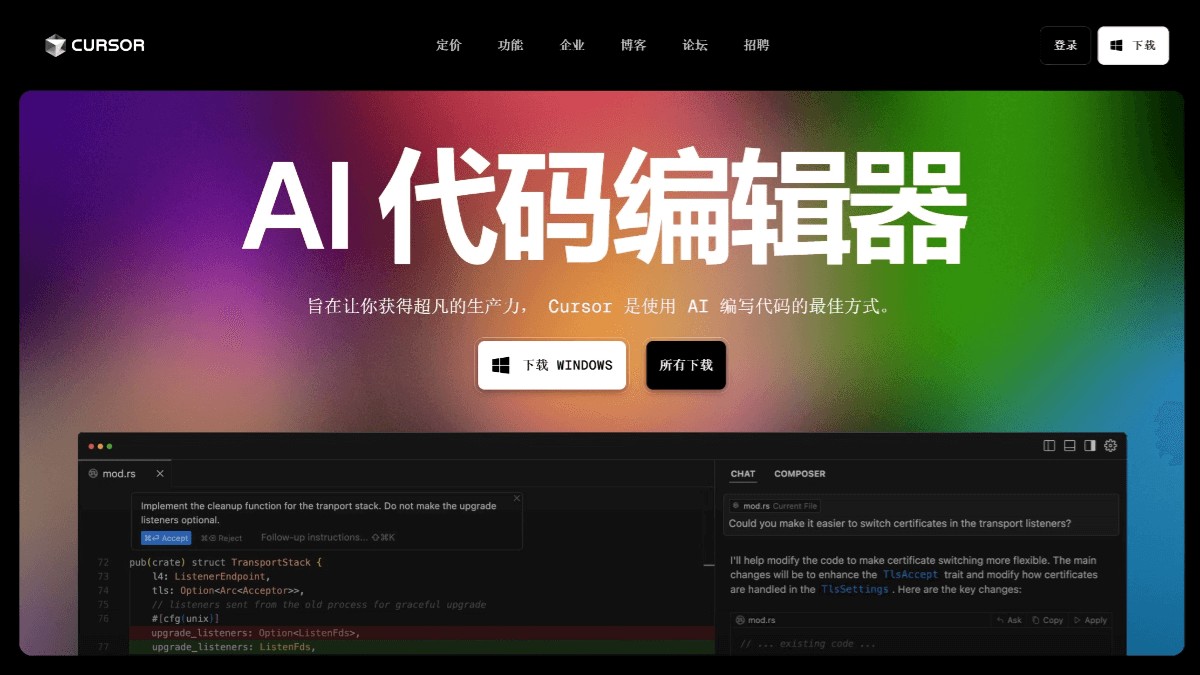
Graph neural network (GNN) is a neural network model that specializes in processing graph data and has powerful modeling and learning capabilities. Through information propagation and node representation learning, GNN can capture the structural information and mutual relationships between nodes in graph data, and is widely used in fields such as social network analysis, recommendation systems, image and video analysis, and bioinformatics.
Graph neural network is a special type of neural network whose design is inspired by graph theory and representation learning of graph structures. Unlike traditional neural networks, GNN can effectively process unstructured graph data, such as social networks, recommendation systems, and chemical molecular structures. GNN learns the feature representation of graph data based on the relationship between nodes and edges, and captures the context information of nodes by iteratively updating the hidden states of nodes.
The basic principles of GNN include two key steps: information propagation and node representation learning:
1. Information dissemination
GNN establishes connections between nodes by propagating information on the graph structure. Specifically, each node aggregates and combines its own characteristics with those of neighboring nodes to form a new node representation. This information dissemination process can be realized through a message passing mechanism, in which each node updates its own status based on the information of neighboring nodes.
2. Node representation learning
GNN gradually updates the representation of nodes through multiple rounds of information propagation. Each round of propagation increases the importance of the features of a node's neighbors and updates the node's own representation. Through multiple rounds of propagation, the node representation will gradually integrate global graph structure information to form a richer feature representation.
GNN has shown wide application potential in many fields. The following are some main application fields:
1. Social network analysis
GNN can be applied to tasks such as node classification, community discovery, and link prediction in social networks. By learning the relationships and influences between nodes, GNN can effectively mine latent patterns and structures in social networks.
2. Recommendation system
GNN can be used in recommendation systems to learn the relationship between users and items to improve the accuracy and personalization of recommendations. By utilizing information propagation and node representation learning in graph structures, GNN is able to capture the correlation between user interests and items.
3. Image and video analysis
GNN can combine graph structure information in image or video data to perform tasks such as object recognition, scene understanding, and video annotation. By learning the feature representation of nodes on the graph, GNN can make full use of contextual information in images or videos to improve the accuracy of analysis and understanding.
4. Bioinformatics
GNN can be used in tasks such as molecular structure prediction, protein folding and drug discovery in the field of bioinformatics. By learning the interactions and structural relationships between molecules, GNN can assist researchers in conducting precise analysis and predictions in the biological field.
GNN is a powerful artificial intelligence technology that can help us mine potential patterns in graph data, improve recommendation accuracy, improve the accuracy of image and video analysis, and conduct accurate analysis and prediction in the field of bioinformatics. With the continuous development of artificial intelligence, GNN will continue to provide us with more possibilities and innovation potential for solving practical problems.
Extended reading 1: What is the difference between graph neural network and neural network
Graph Neural Networks (GNN) and neural networks are two different neural network models. The differences between the two are mainly reflected in the following aspects:
1. Different data structures
Traditional neural networks are mainly used to process data in the form of vectors or matrices, such as images, text, and speech. Their inputs are fixed-dimensional data, and the inputs are usually assumed to be independent. GNN is specially used to process graph-structured data, where the data is organized into a graph composed of nodes and edges. GNN can use the relationship between nodes and edges to learn the feature representation of graph data, thereby capturing the mutual influence and structural information between nodes.
2. Different information dissemination
The information dissemination of traditional neural networks is realized through the connection weights in the network. Each neuron receives the output of the neuron of the previous layer and passes its weighted sum to the neurons of the next layer. This method of information propagation is suitable for input data with a fixed structure. In contrast, GNN adopts a message passing mechanism based on neighbor nodes. Each node aggregates and updates features based on the information of neighboring nodes to capture contextual information between nodes.
3. Different contextual information
Traditional neural networks usually ignore contextual information between input data, and each input sample is processed independently. Through the process of information dissemination and node representation learning, GNN can integrate global graph structure information and capture the relationships and context between nodes. This enables GNN to better exploit the interactions and dependencies between nodes when processing graph data.
4. Different application fields
Traditional neural networks are mainly used in fields such as computer vision, natural language processing and speech recognition, involving tasks such as image classification, text generation and speech recognition. GNN is widely used in social network analysis, recommendation systems, bioinformatics, image and video analysis and other fields. GNN can better process data with complex structures and correlations, and provide more accurate prediction and analysis results.



